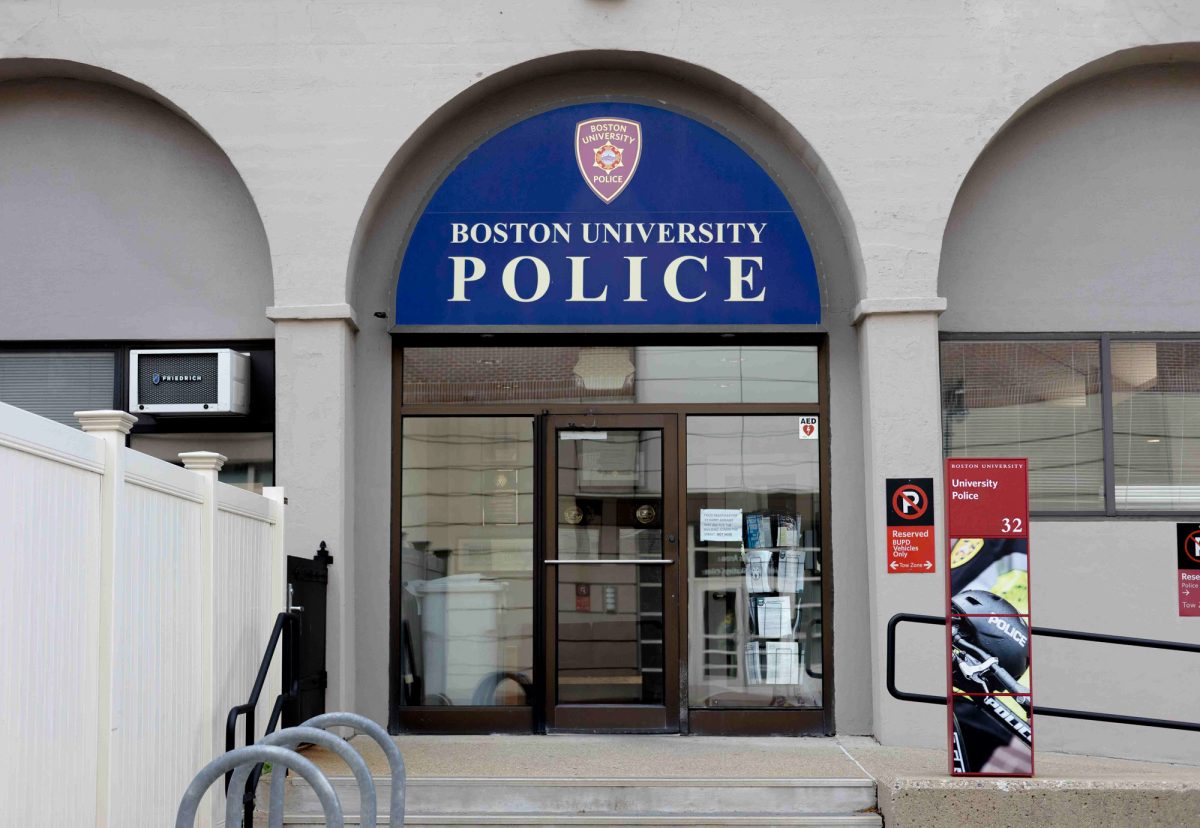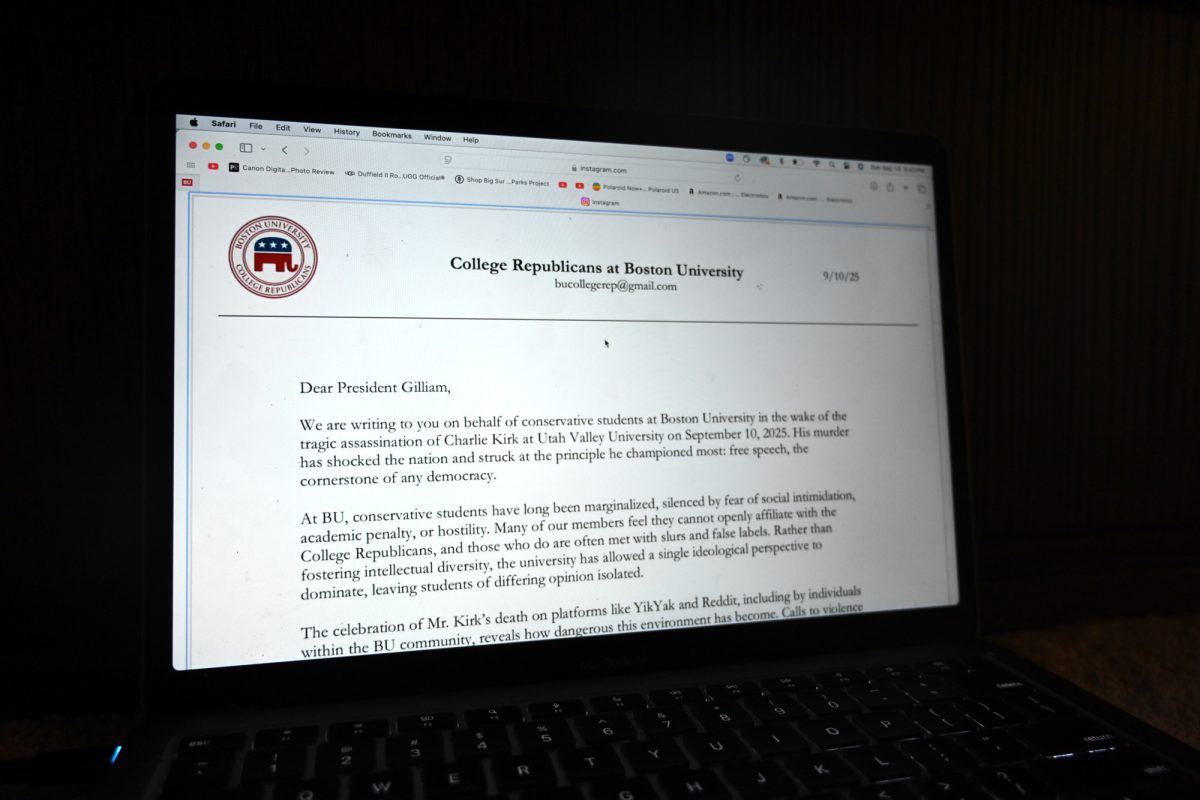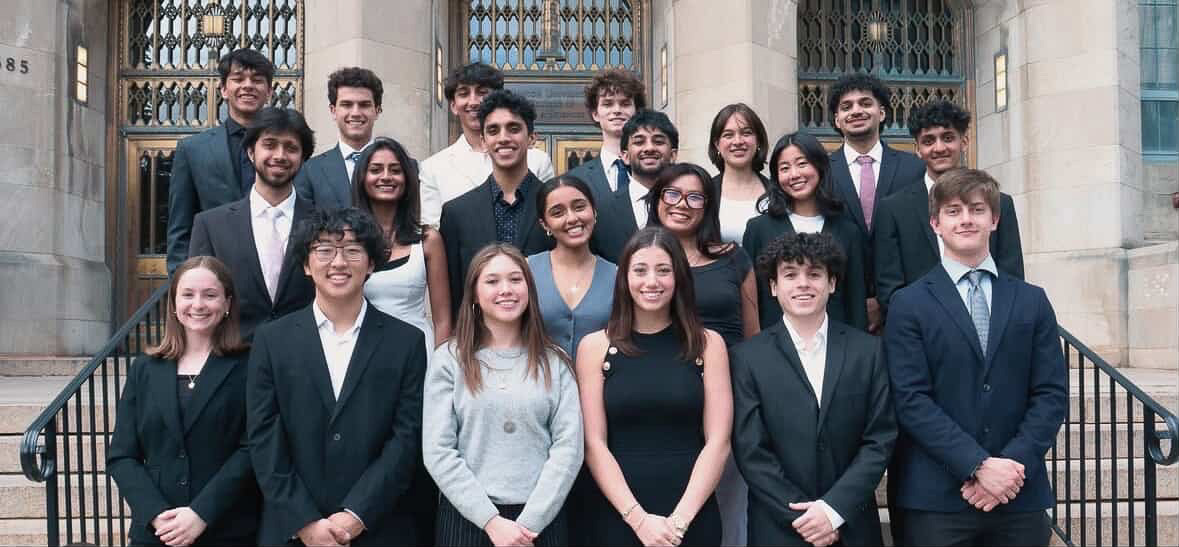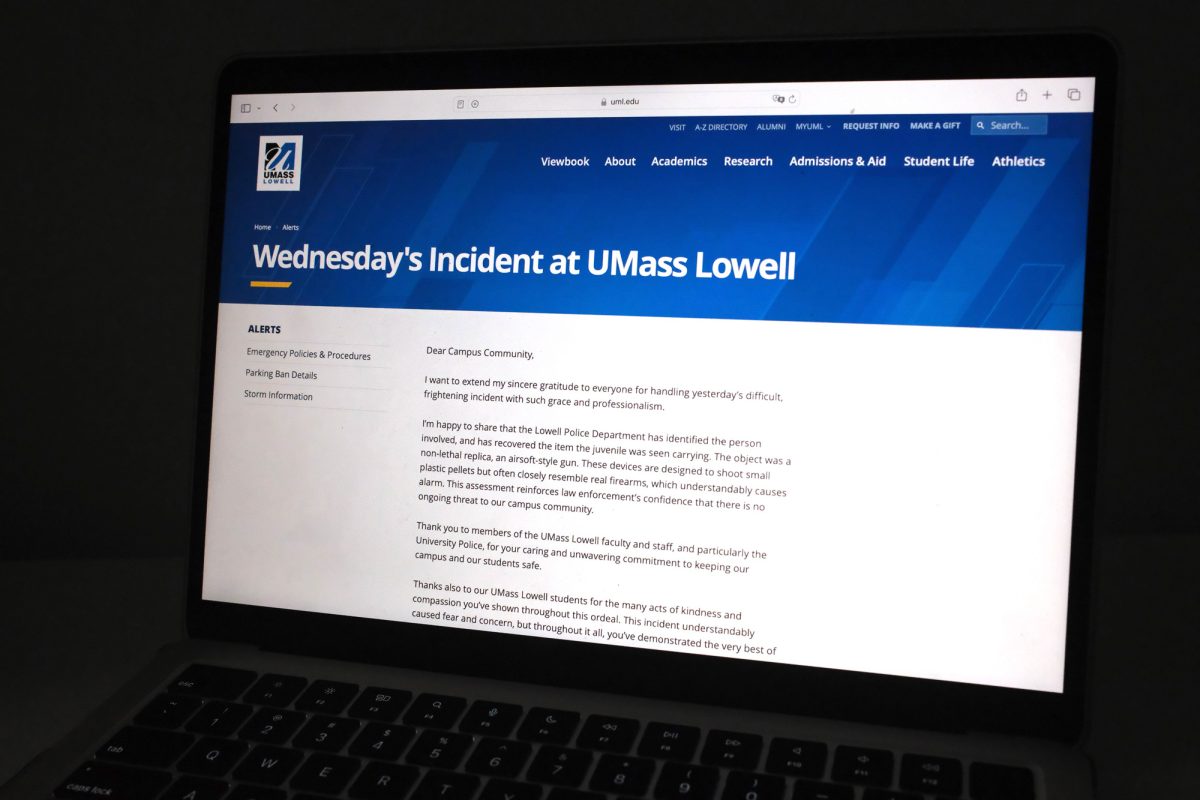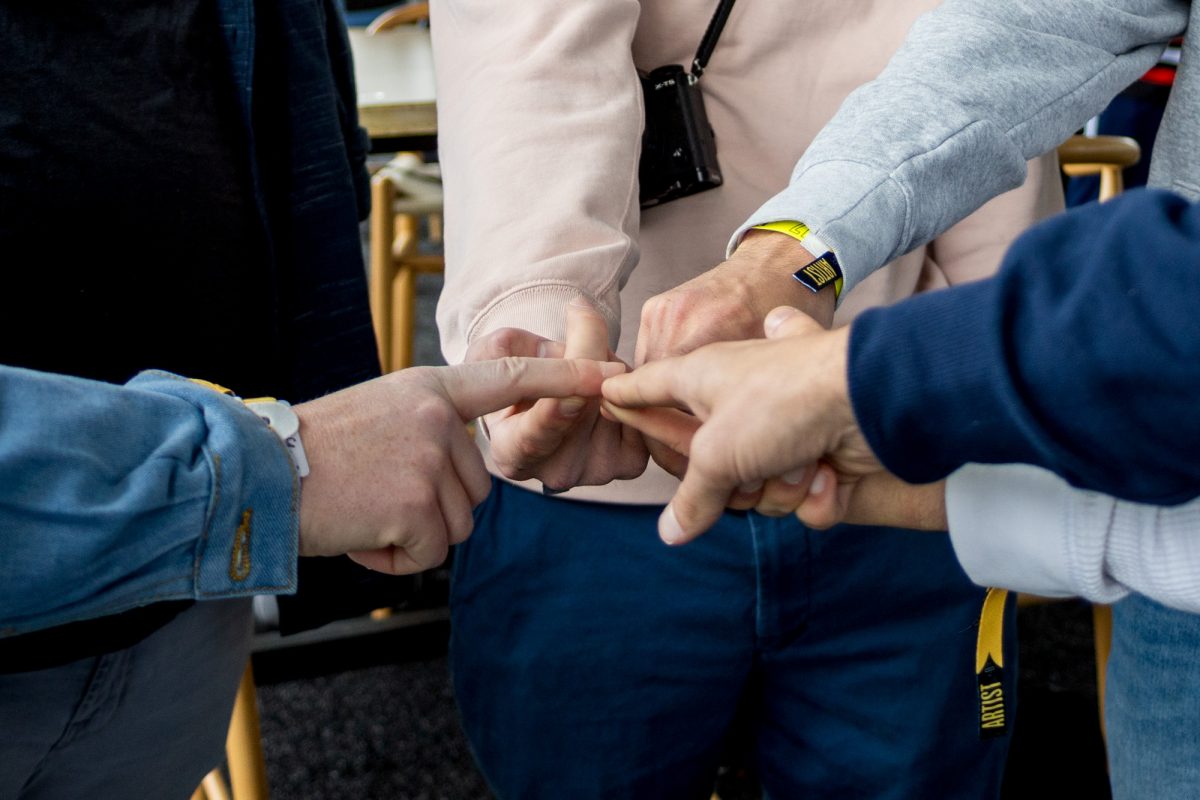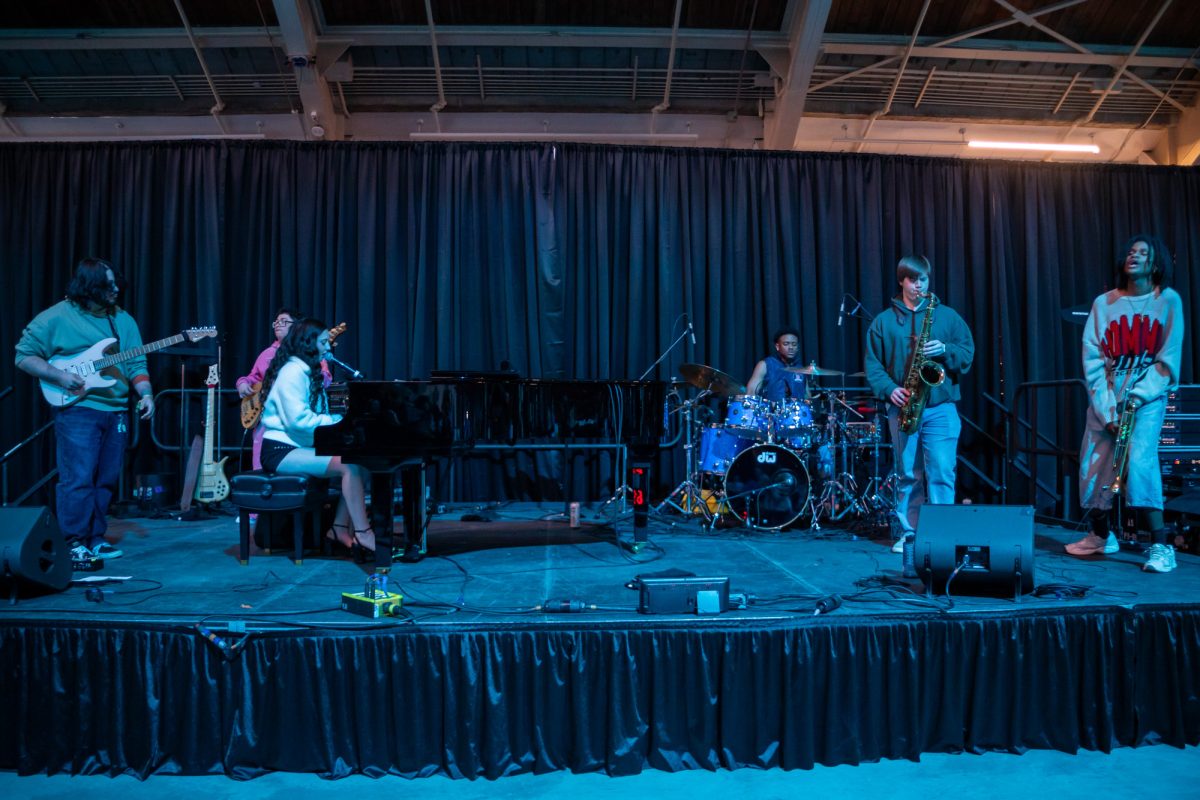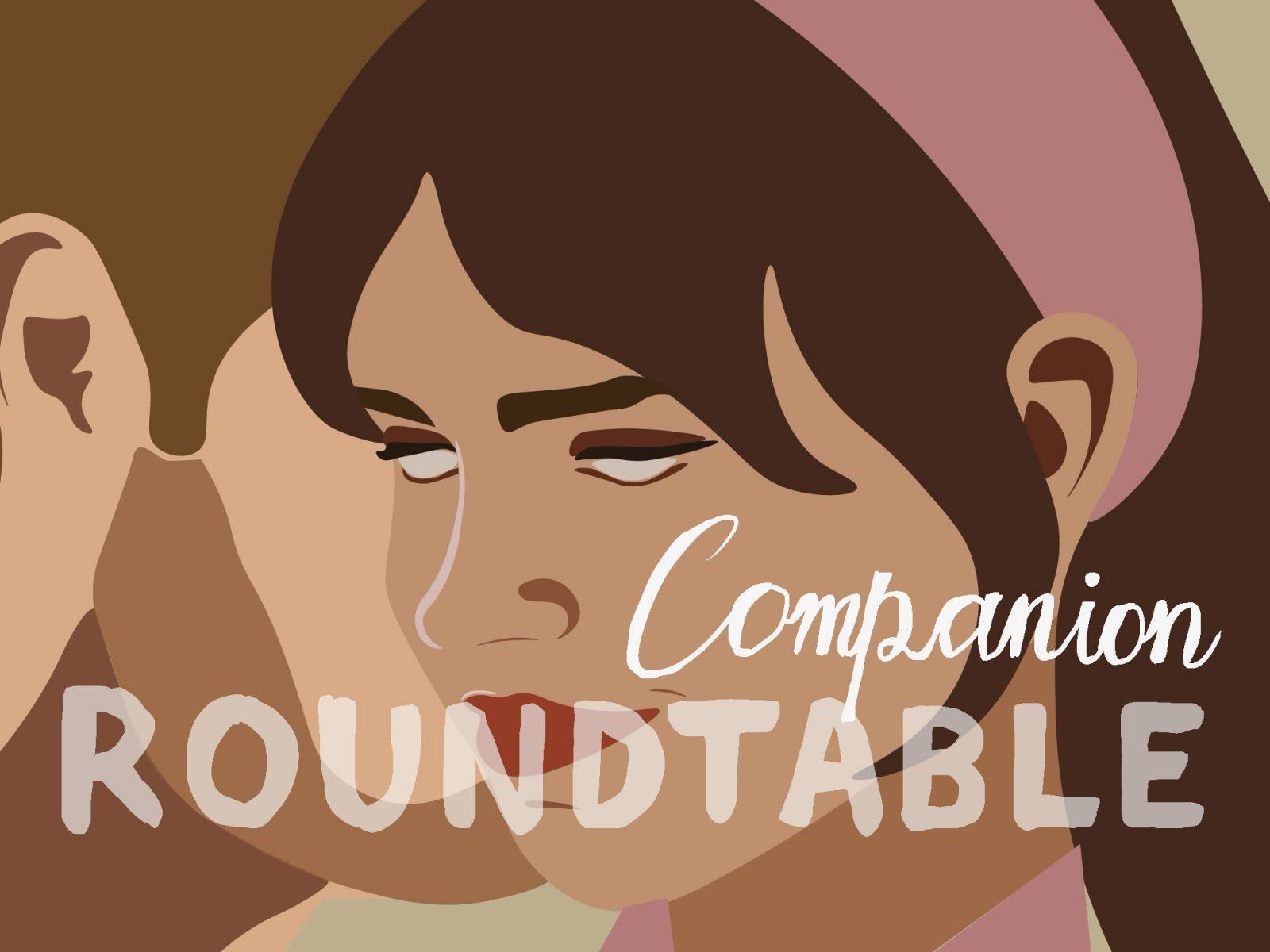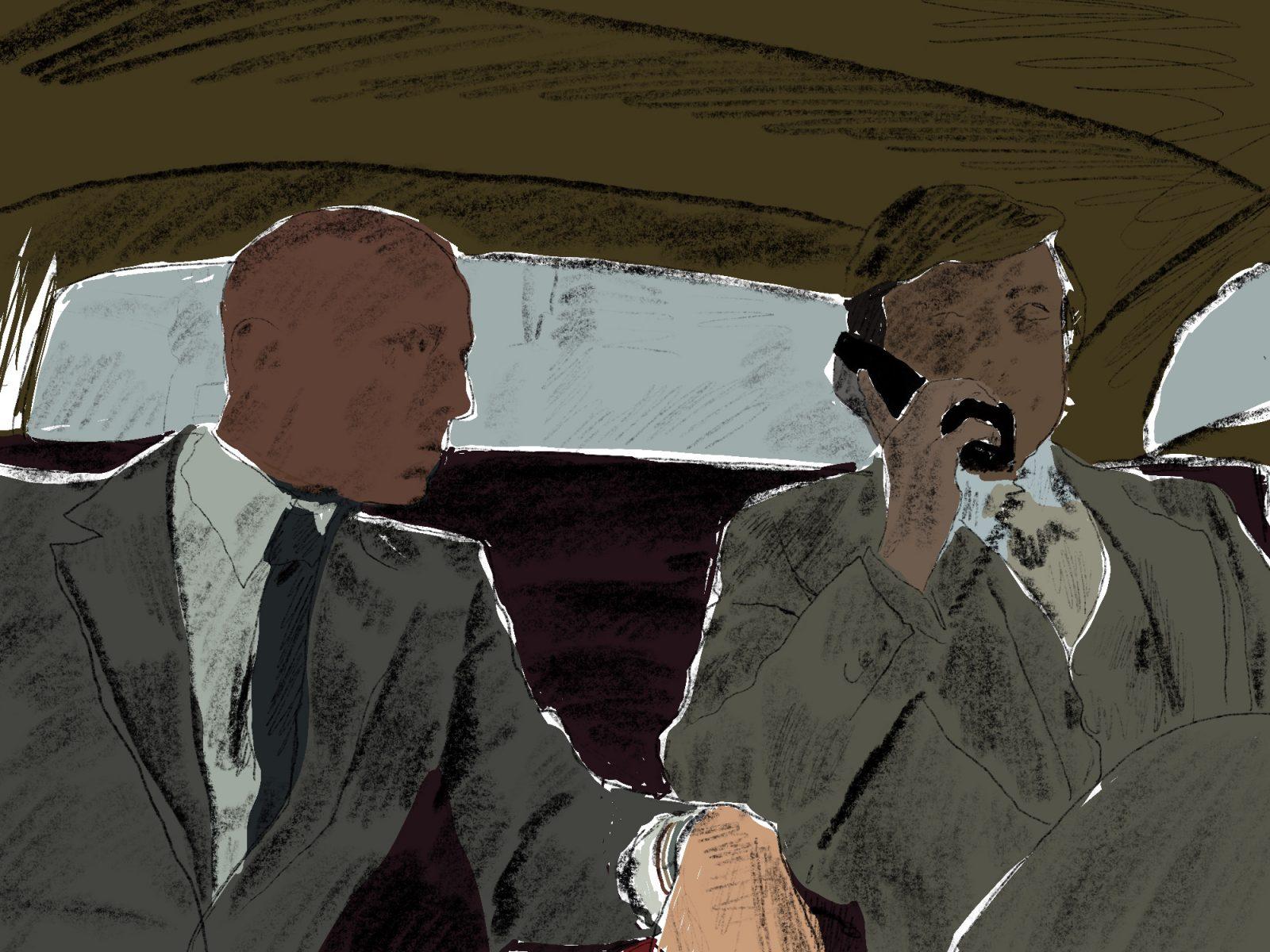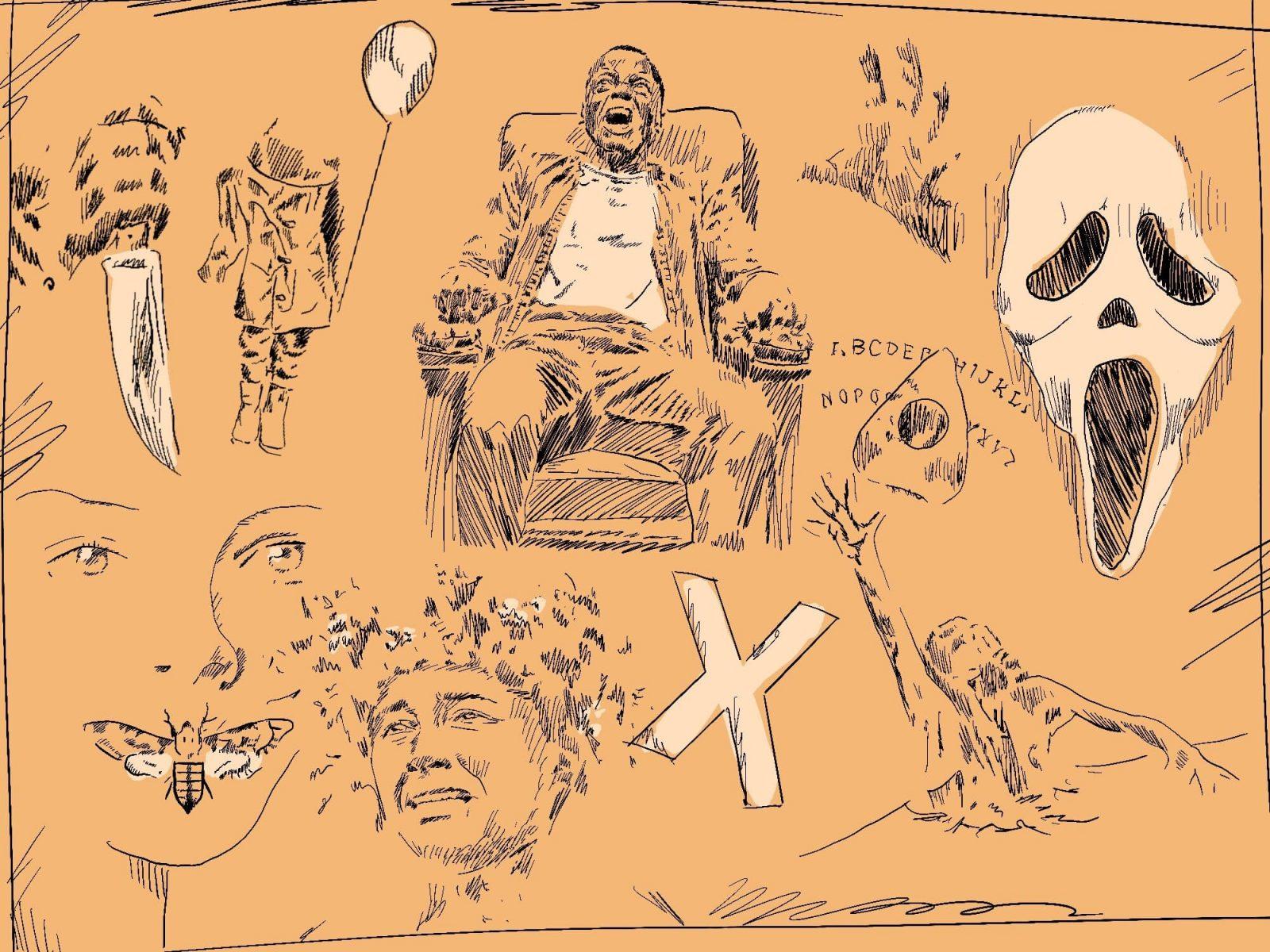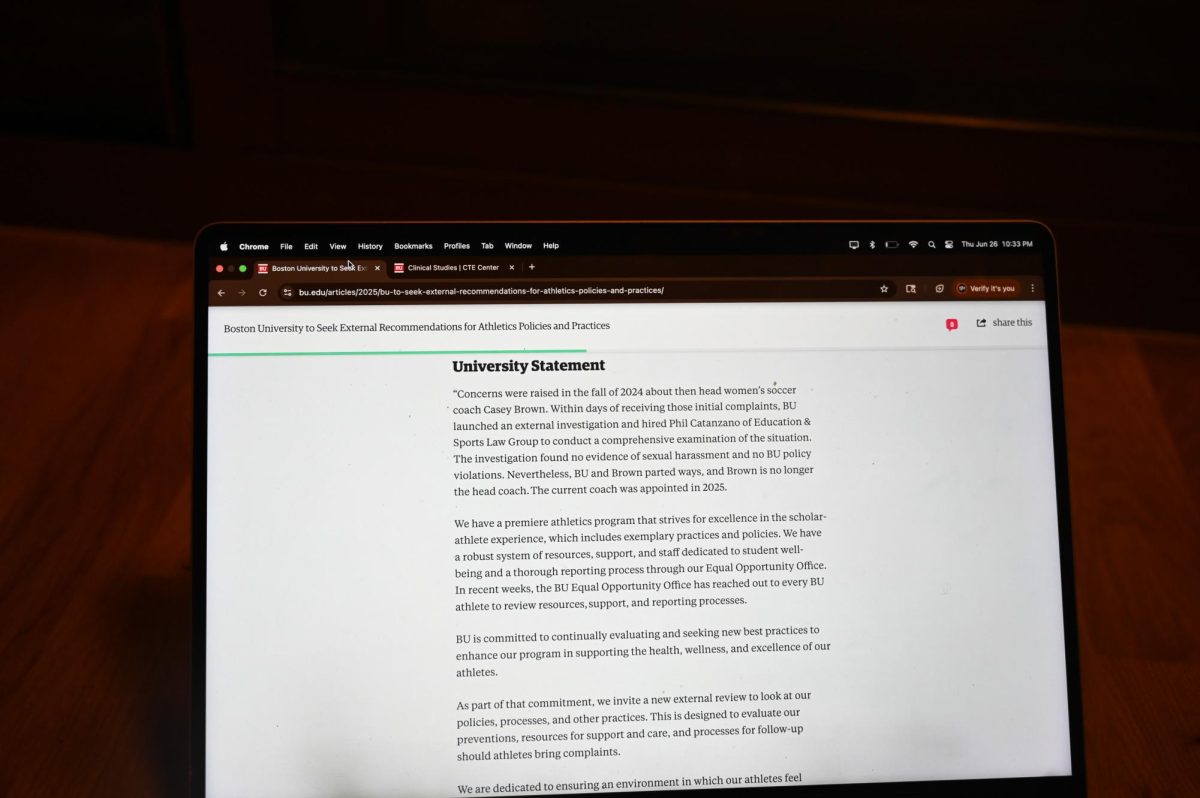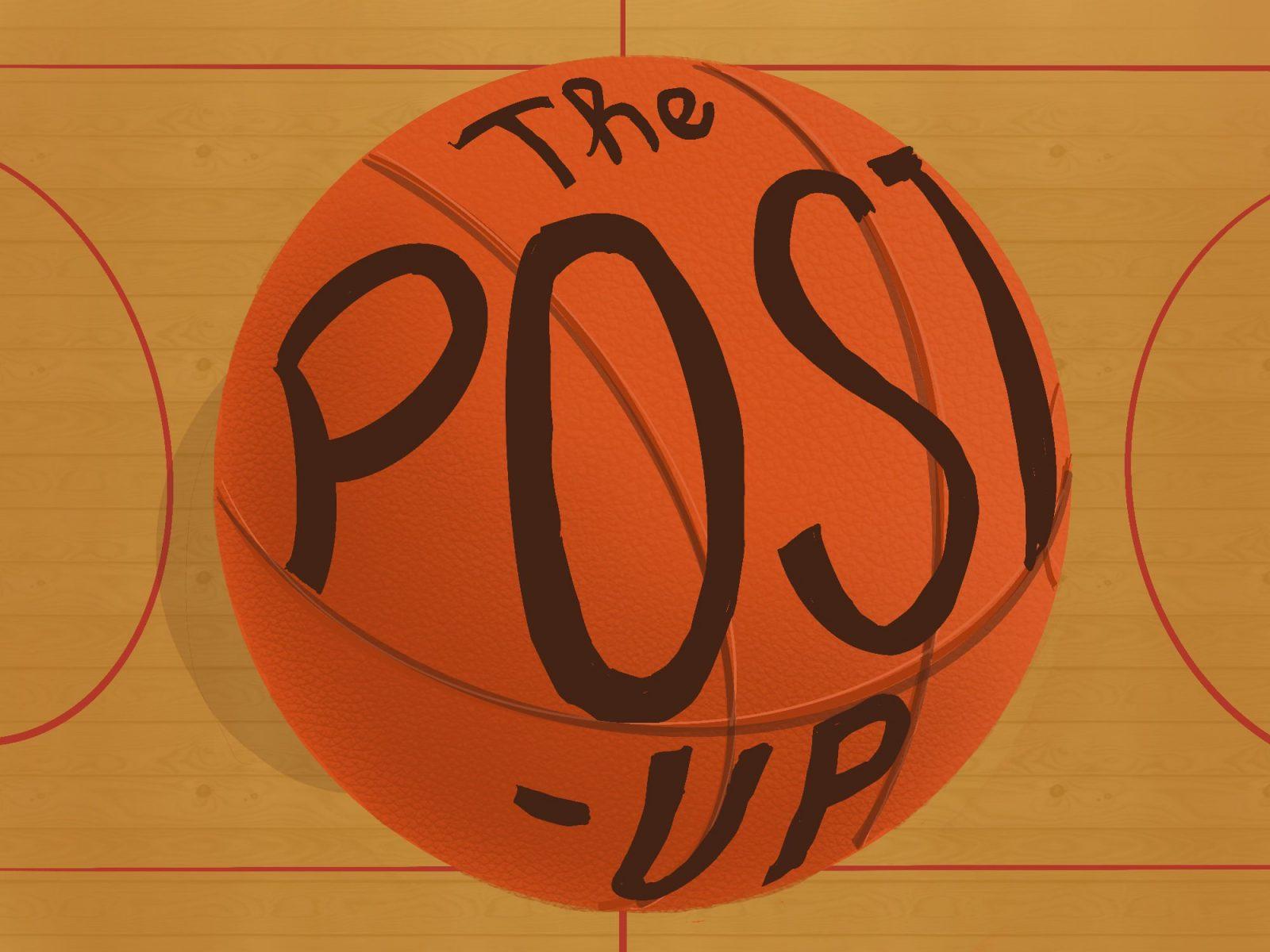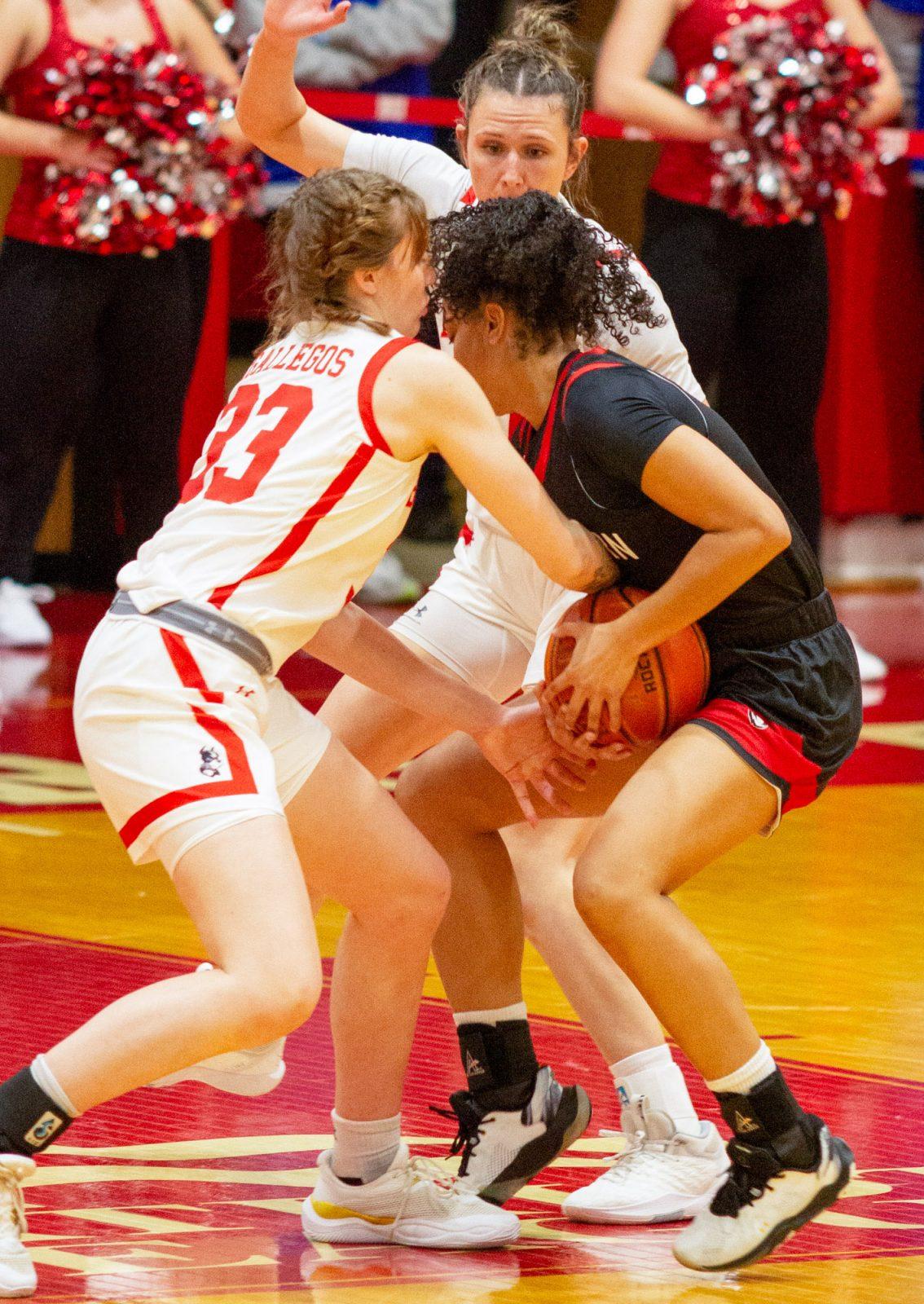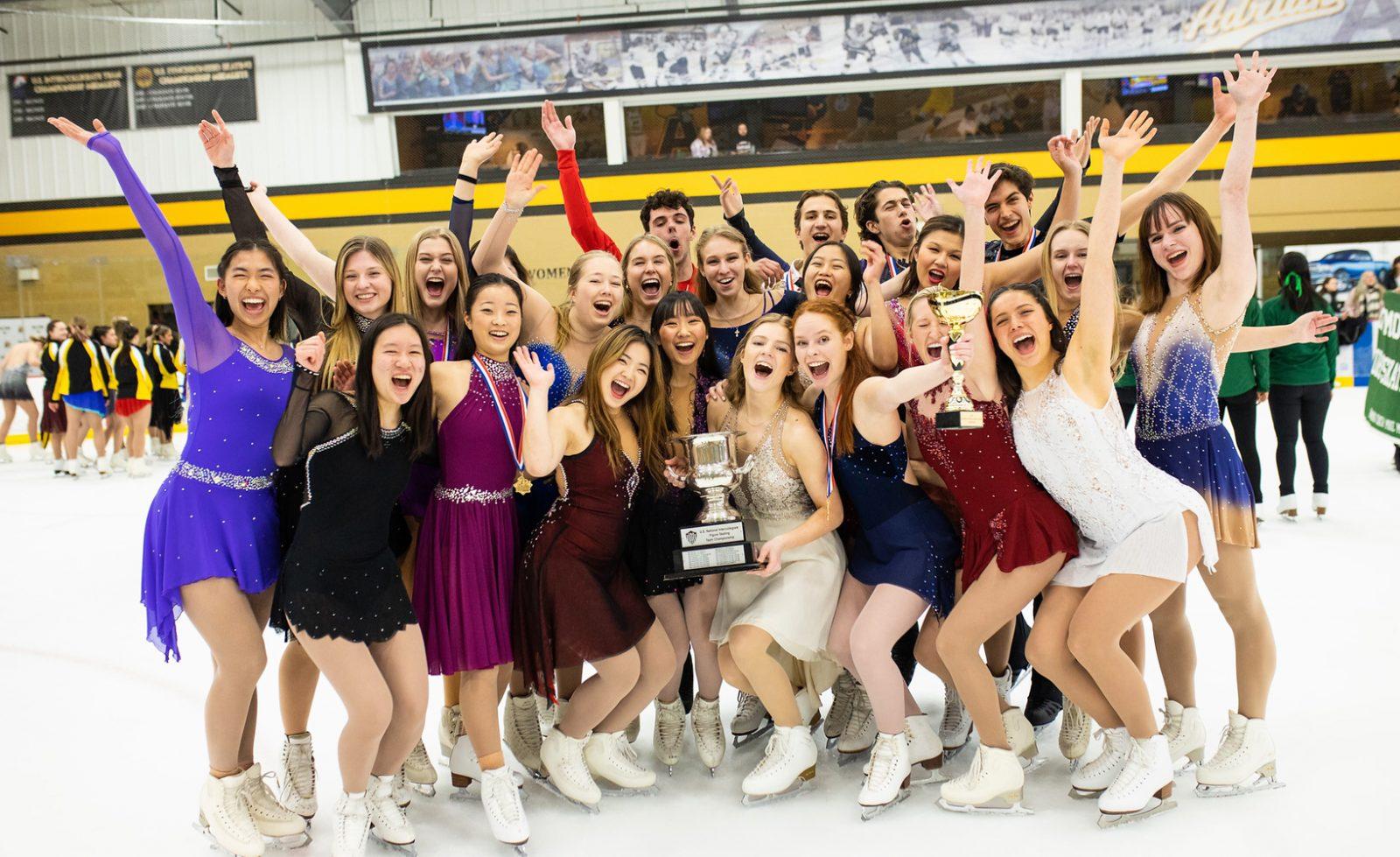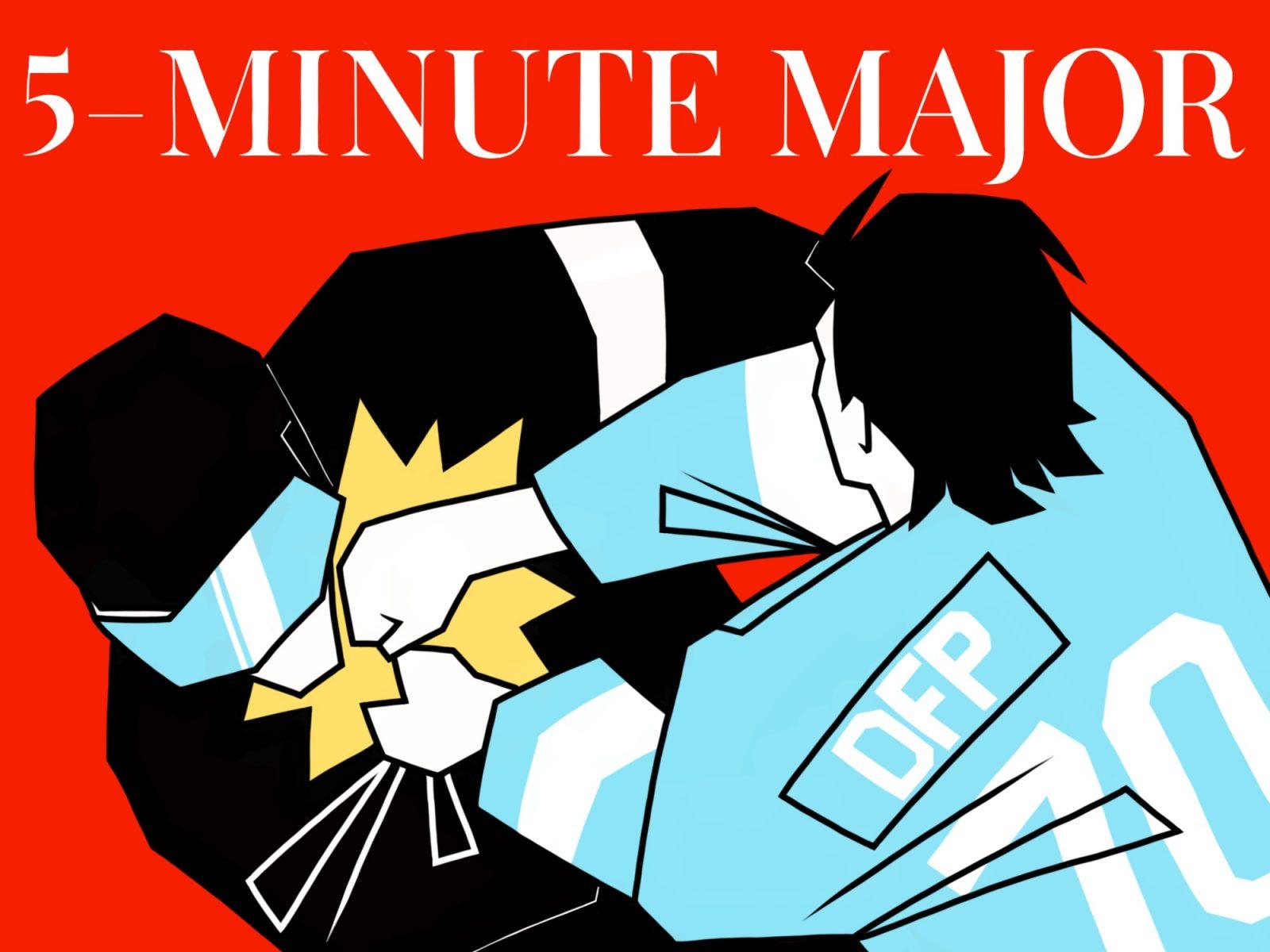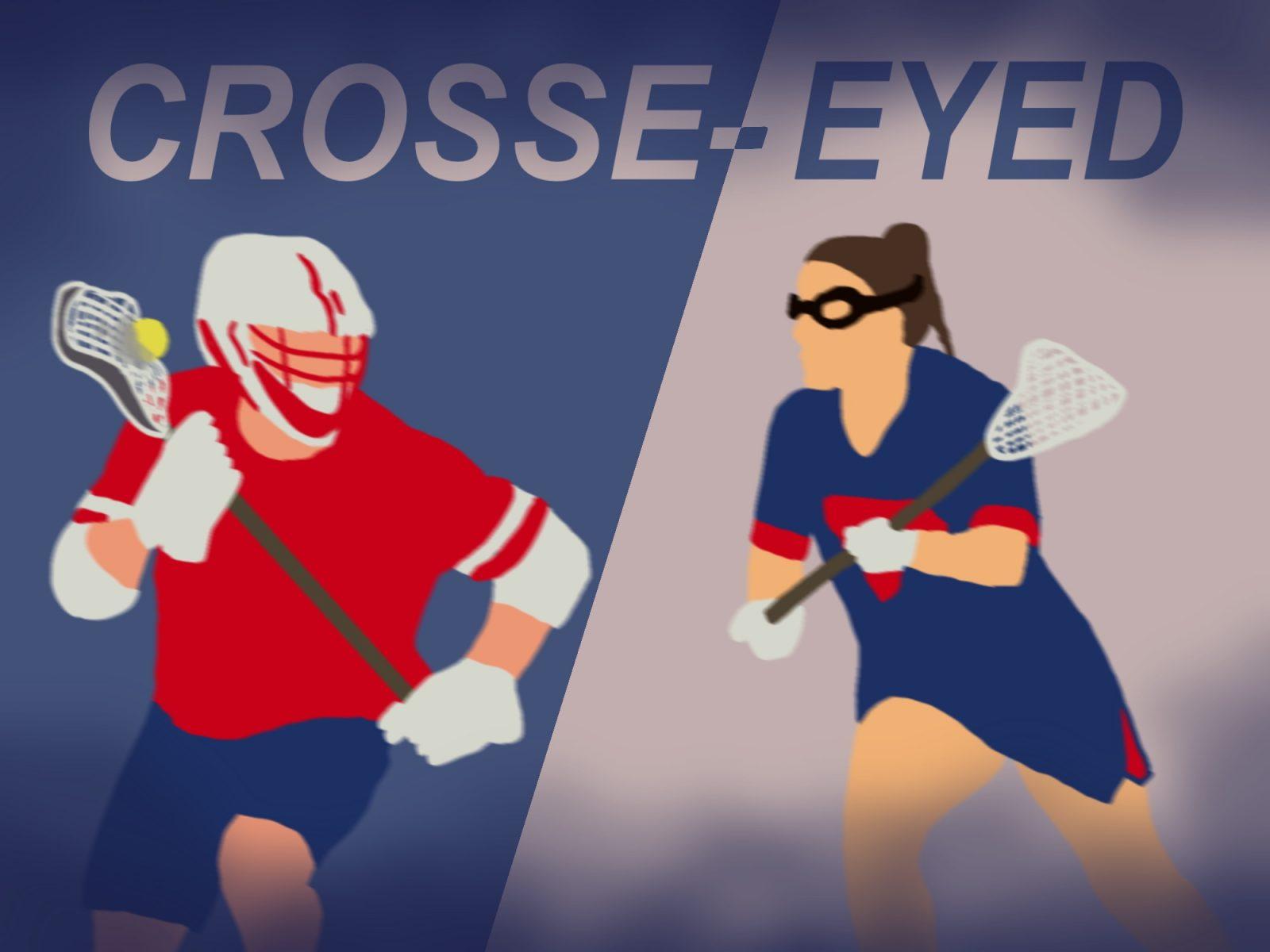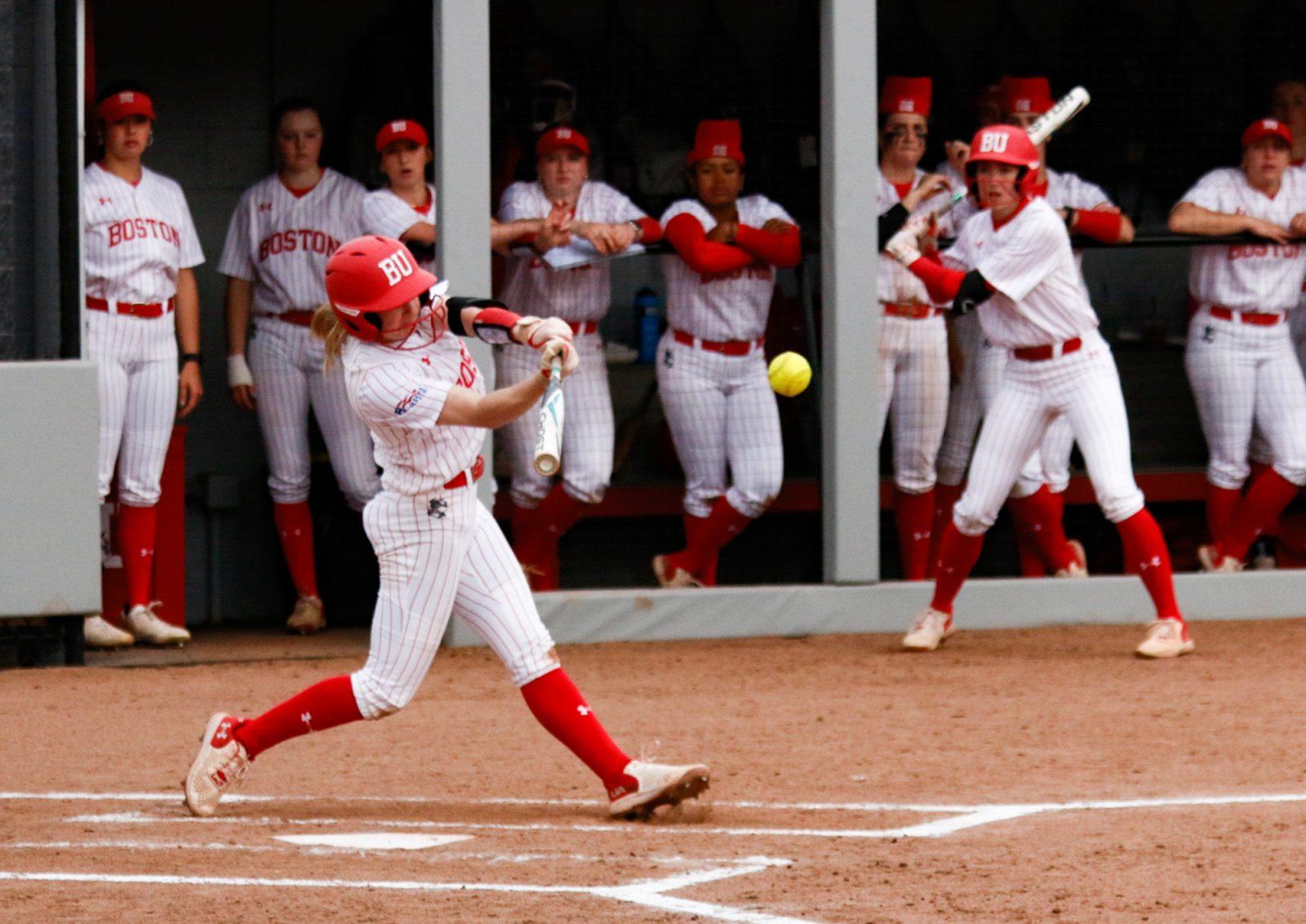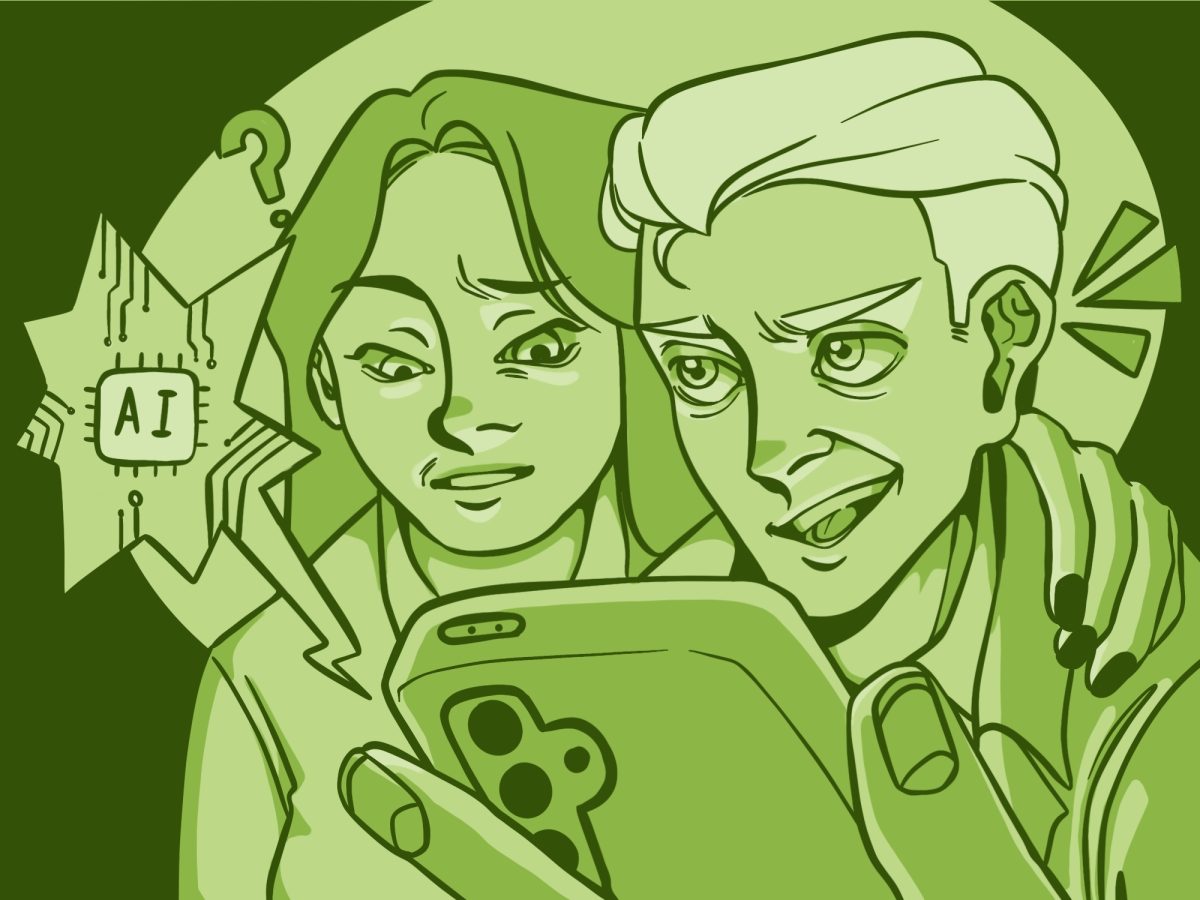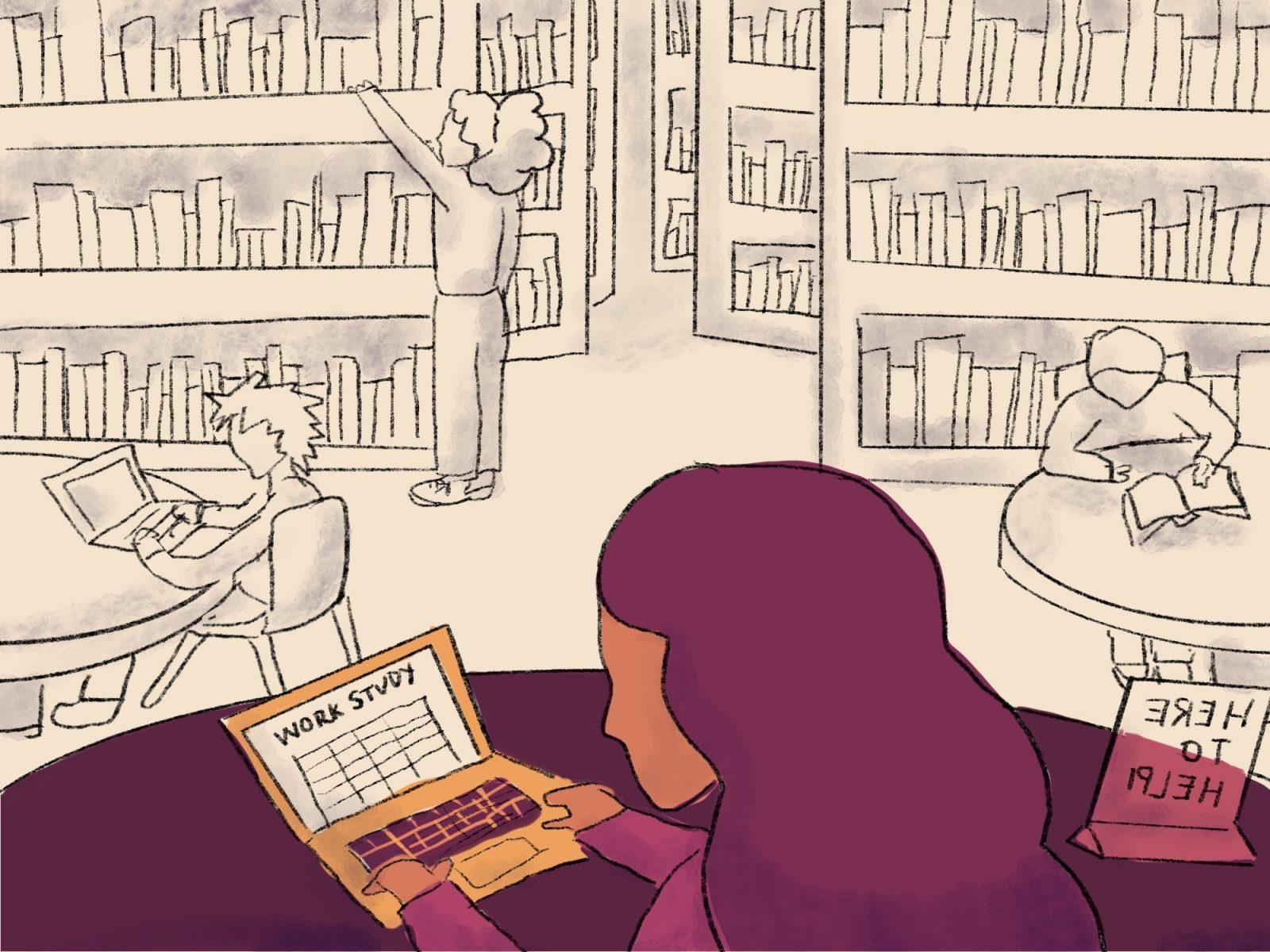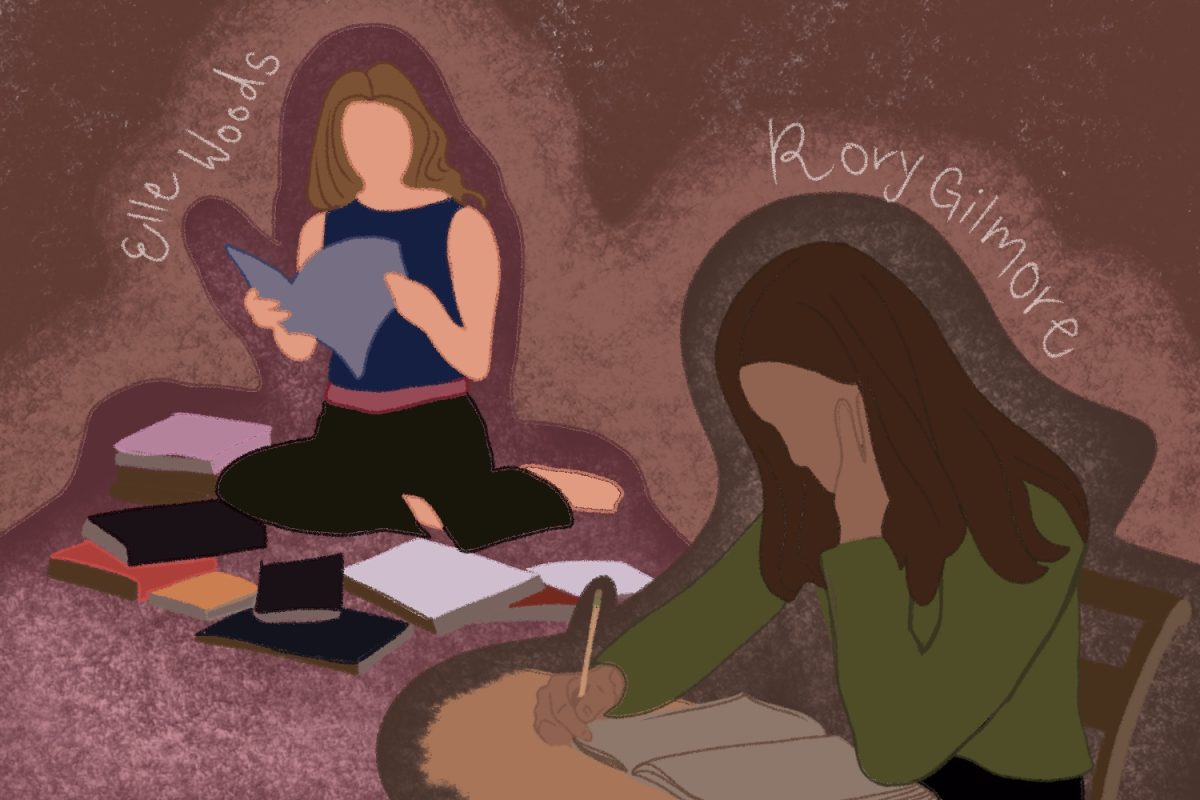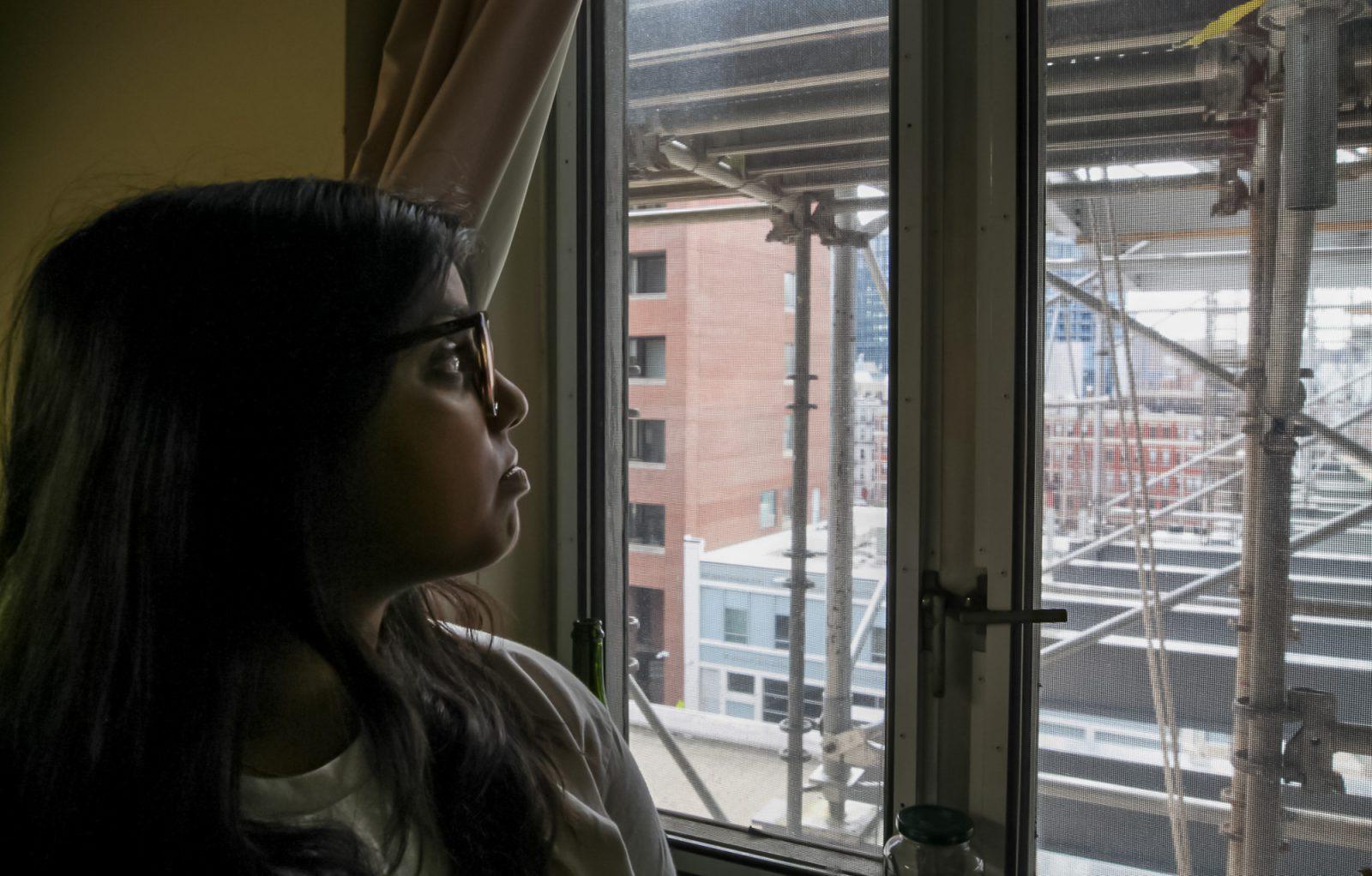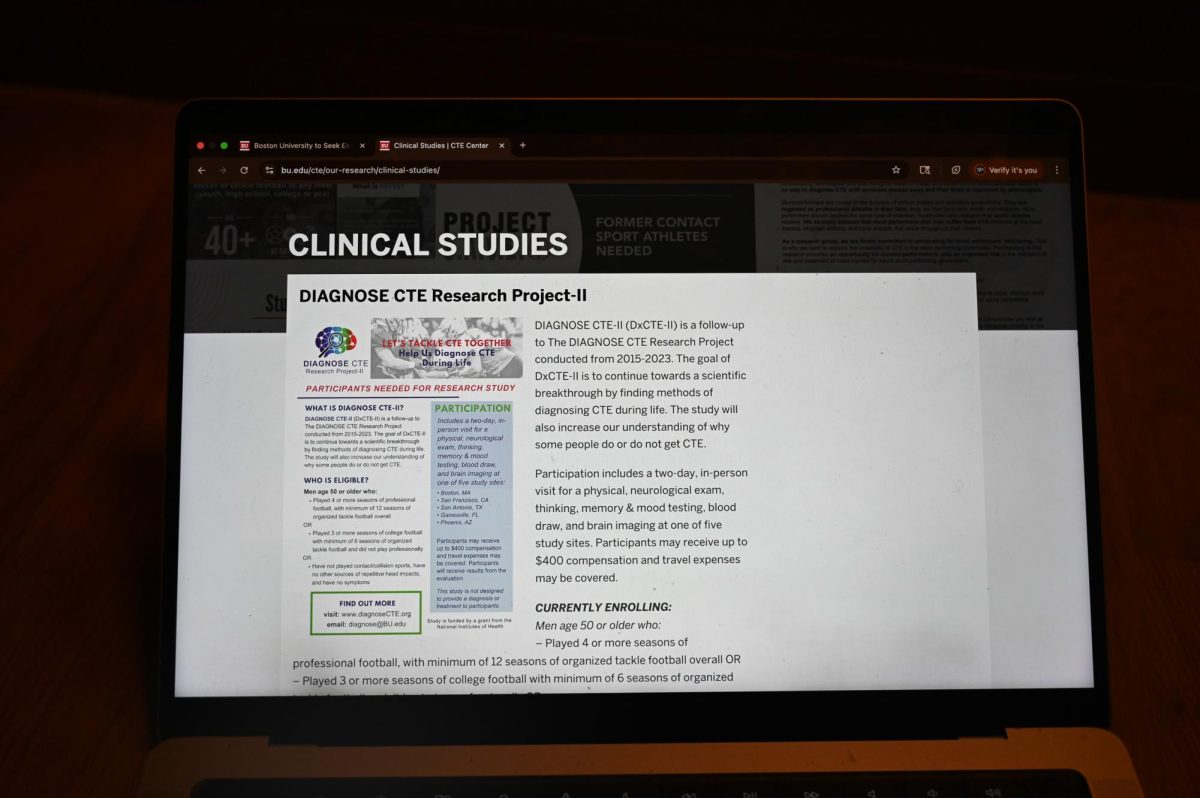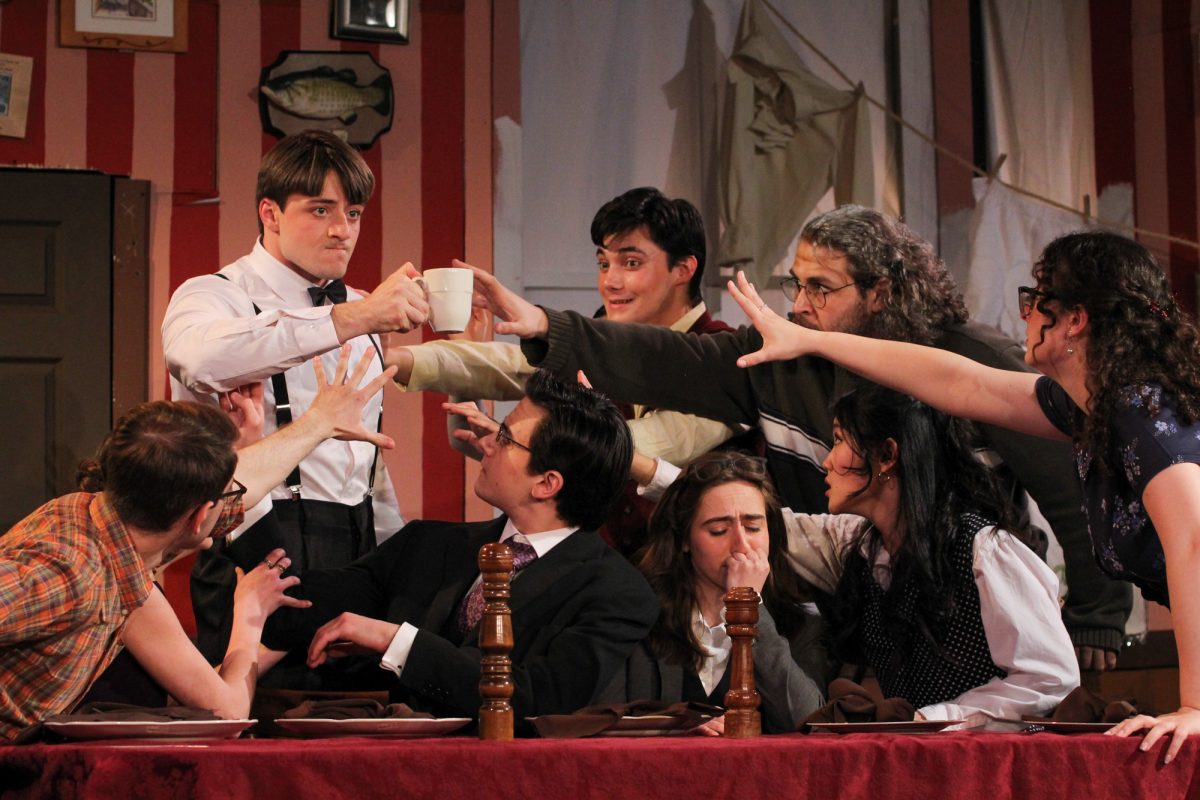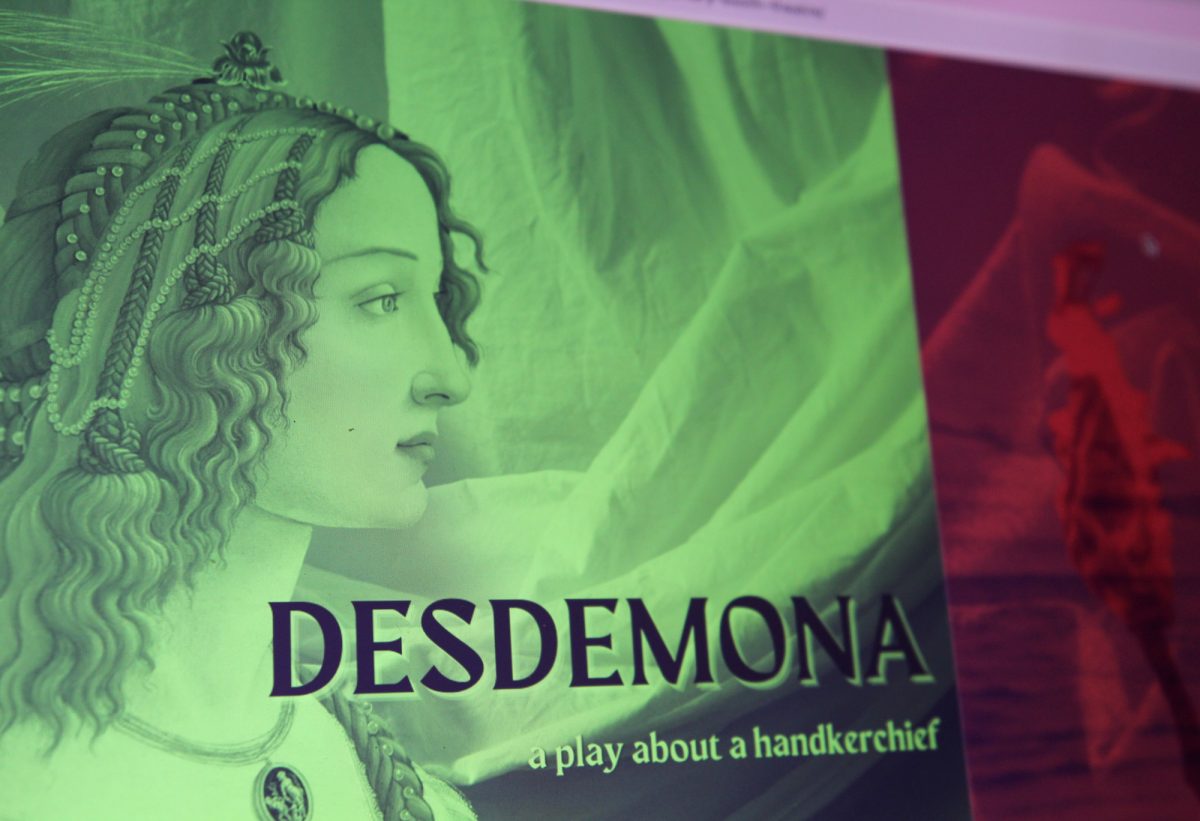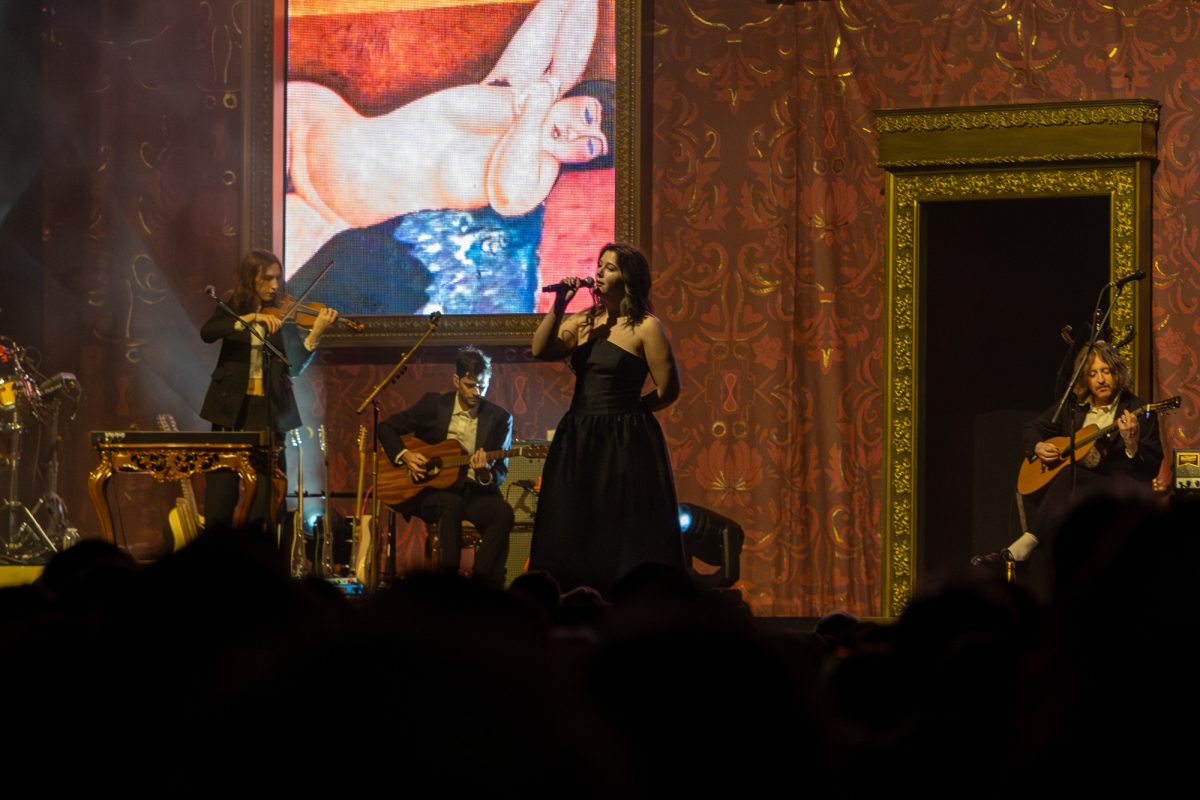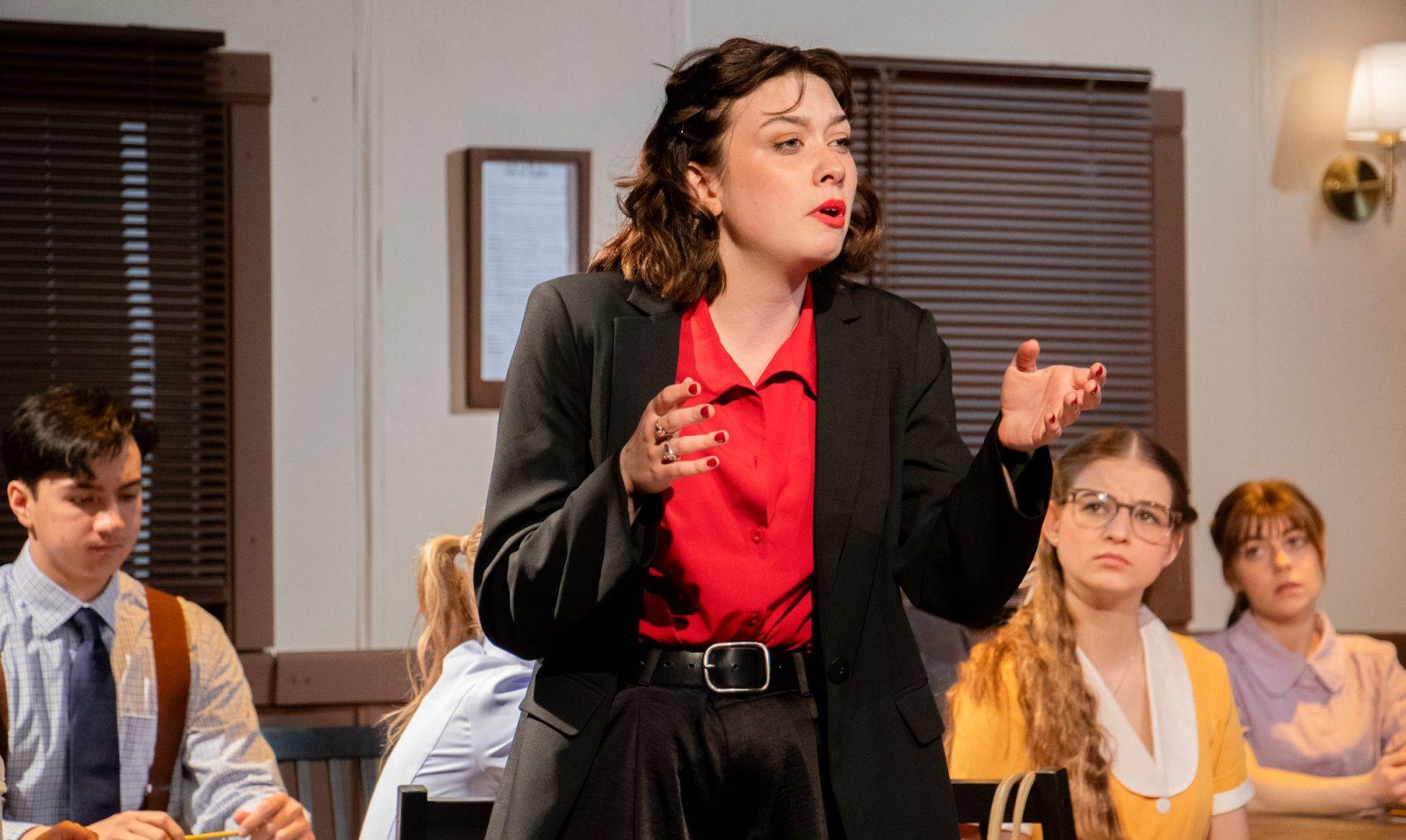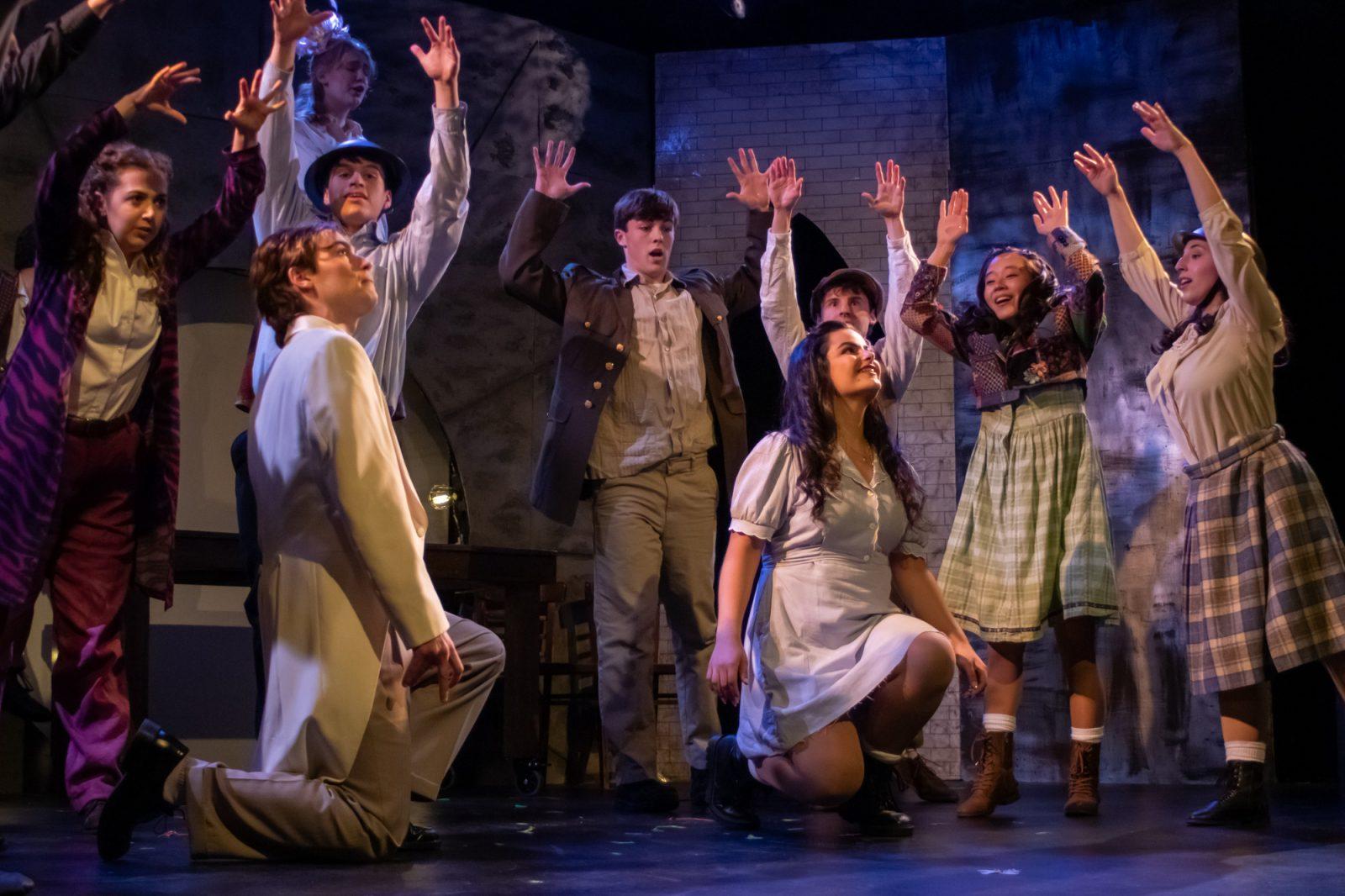Everyone knows the story of “Romeo and Juliet”: two star-crossed lovers in fair Verona, deeply enthralled with one another — but torn apart by their family’s feud.
While BU Shakespeare Society did not change any of these elements in its production of “Romeo and Juliet” from April 3-5, it managed to bring new life into the Shakespearean tragedy by introducing a new character: Fate.
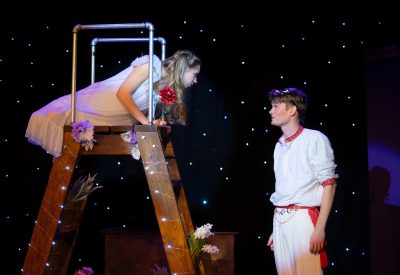
In the play’s program, Director Megan Amato wrote that in her approach to revitalizing the show, she wanted to bring a new visual dimension to it without fundamentally changing the plot.
Thus, Fate was born.
The play’s synopsis describes Fate as a “shooting star,” who serves both as a narrator for the audience and actual character who delivers traditionally ensemble-spoken lines and is seen by certain members of the cast.
Fate is the production’s most significant addition to the story, adding new dimensions to the text while not making any major changes to the language or plot itself.
Junior Artem Vazetdinov’s performance as Fate was well-rounded and physically dynamic. His movements varied between dreamy and intense, reflecting Romeo and Juliet’s loss of innocence as well as Fate’s loss of naivety.
One of the great strengths of this production was Amato’s direction. While different choices could have risked taking the audience out of the time period, the usage of lighting, costumes and choreography made the classic elements of the story shine.
The stunning costumes, designed by sophomore Sarah Altier, portrayed the divide between the red-toned Montagues and the blue-toned Capulets, along with neutral characters in shades of purple.
The title characters first appeared in white and progressively picked up elements of their respective family colors, with Romeo, played by freshman Jonathan Sullivan, ending the show in a deep red tunic.
A definite highlight was Fate’s costume, composed of pale blue and silver translucent fabric. The tunic floated as Fate moved across the stage, showcasing the ethereal nature of the character.
Senior Matthew Luponio delivered a standout performance as Mercutio, seamlessly blending a strong dramatic quality with moments of crowd-pleasing humor.
Luponio’s Mercutio was extremely endearing to the audience and his scene-partners, leaving a true emotional impact when his character inevitably dies.
While this production had many highlights, the complications it experienced were mostly due to the original material pulled from the classic tale — not necessarily because of the new production itself.
This staging of “Romeo and Juliet” included some cuts to the script, including the minimization of Lord and Lady Montague and Paris, and also reattributing a number of lines to Fate.
Even with these cuts, some scenes in the second half of the play felt like a struggle to get through. The long monologues stalled the play’s momentum, highlighting the scenes’ lack of visual interest.
Another problem was Romeo and Juliet’s youthful energy spilling over into being childish, which made their shift to darker, more dramatic scenes less believable — and in some cases, disorienting.
But even amidst the show’s minor drawbacks, this production’s attention to detail shines through.
In one scene at the Capulet ball, Fate places a piece of string and connects Romeo and Juliet, drawing them together amid the crowd around them.
The instrumental of Taylor Swift’s “invisible string,” a song which describes the idea of love destined to happen, was a perfect choice to soundtrack this moment. It clearly demonstrated BU Shakespeare Society’s ability to take a centuries-old text and bring something new to it.
While this performance of “Romeo and Juliet” was not perfect, its tight direction and beautiful visuals created a production that I feel was a worthy adaptation of the classic play.
All in all, BU Shakespeare Society’s “Romeo and Juliet” reached for the stars — and in large part, managed to deliver.
City Co-Editor Samantha Genzer and Associate City Editor Megan Amato are members of the “Romeo and Juliet” production. They were not involved in the writing, reporting or editing of this article.

